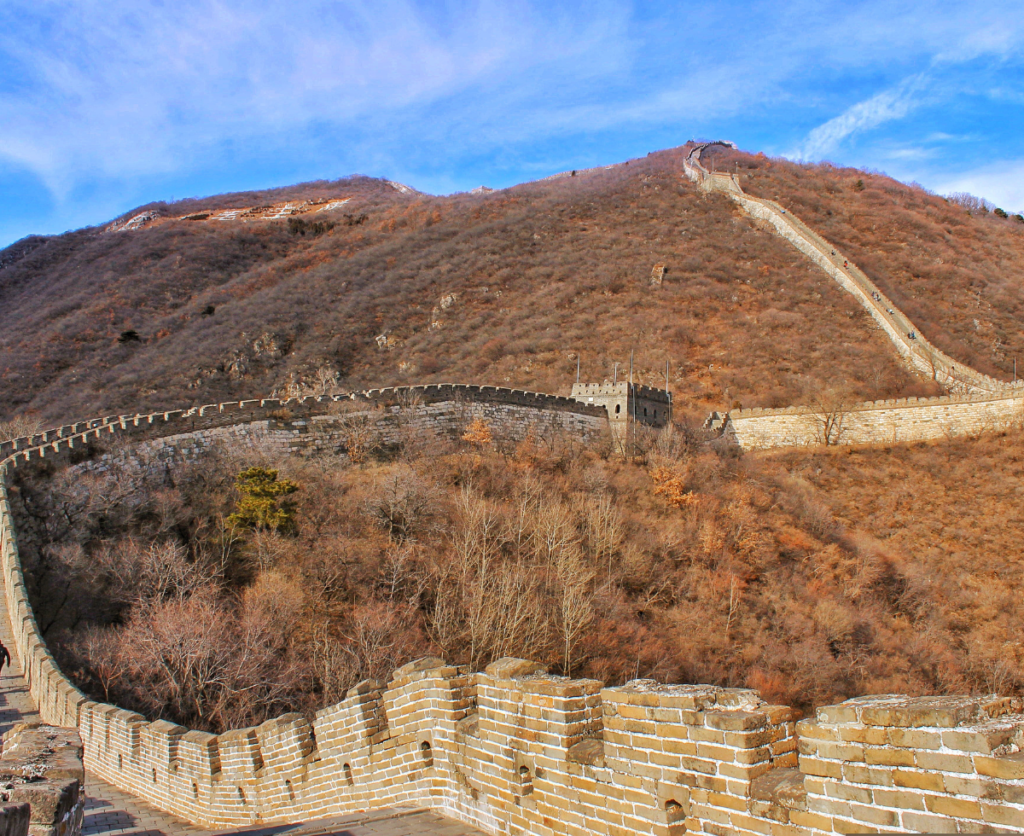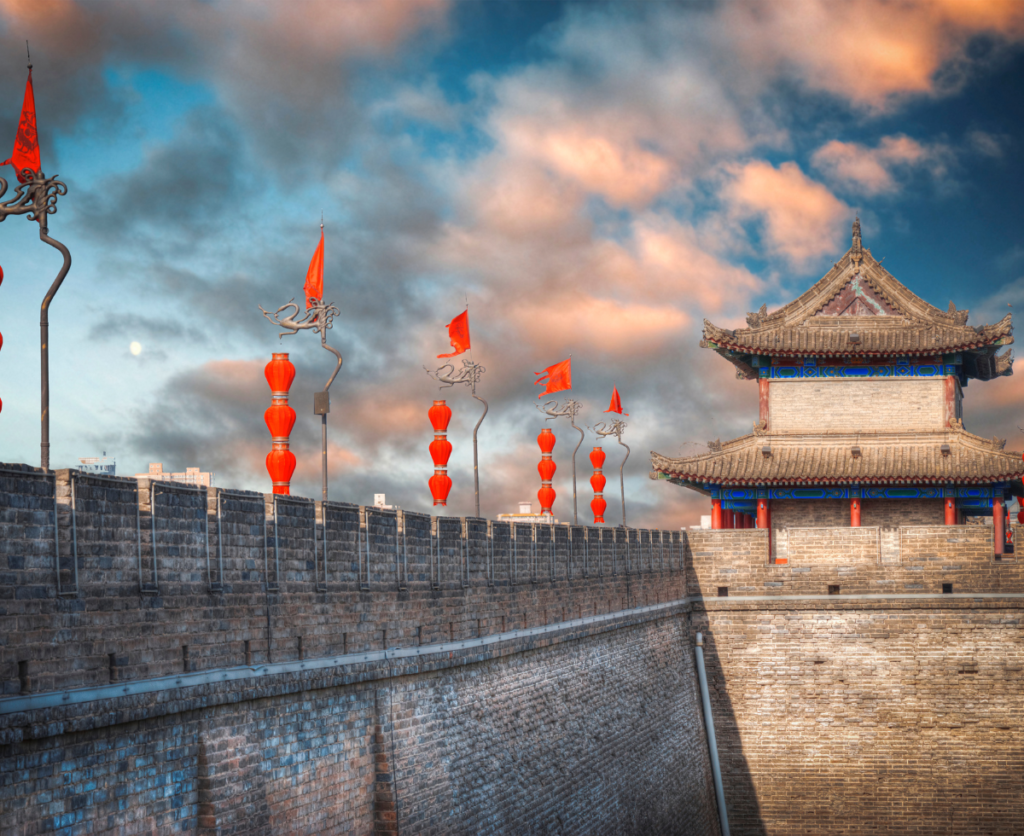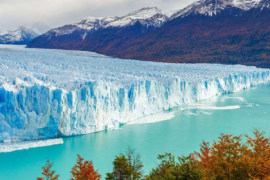Curiosities of the Chinese Wall. Step into a world of wonder and mystery as we embark on a journey to uncover the secrets of one of the world’s most iconic structures – the Great Wall of China. Spanning over 13,000 miles and centuries of history, this colossal marvel has captivated the hearts and minds of people from all walks of life. But beyond its grandeur and architectural brilliance, lies a tapestry of curiosities waiting to be unraveled.
The Construction of the Great Wall
The construction of the Great Wall is a testament to the remarkable engineering skills of the ancient Chinese. It was not a single project but rather a series of walls built over several dynasties, starting as early as the 7th century BC. The walls were constructed using materials such as stone, brick, and earth, and were reinforced with layers of compacted soil. The builders used a mixture of lime and rice flour as mortar, which helped bind the materials together. The construction process was labor-intensive, involving the work of millions of workers, many of whom were peasants or soldiers conscripted into service.
The Great Wall was built to serve multiple purposes. It was initially constructed as a defensive fortification, designed to protect the ancient Chinese states from invasions by nomadic tribes from the north. The wall also served as a symbol of national unity, demonstrating the strength and power of the Chinese empire. Additionally, it played a crucial role in controlling trade along the Silk Road, a network of trade routes connecting China with the rest of the world. The construction of the Great Wall was an immense undertaking, requiring extensive planning, coordination, and resources.
Curiosities of the Chinese Wall.

Length and Dimensions of the Great Wall
The Great Wall is an expansive structure, stretching across vast landscapes and diverse terrains. Its total length is estimated to be over 13,000 miles, making it the longest man-made structure in the world. To put this into perspective, it is equivalent to traveling from New York City to Sydney, Australia, and back again. The width of the wall varies depending on the section, but it typically measures around 25 feet wide at the base and 15 feet wide at the top. The height of the wall ranges from 15 to 30 feet, with some sections reaching as high as 50 feet.
The dimensions of the Great Wall are truly awe-inspiring, especially when considering the technological limitations of the time. The builders of the wall had to contend with rugged terrain, steep slopes, and harsh weather conditions. Yet, they managed to create a structure that has withstood the test of time and continues to amaze visitors from around the world.Curiosities of the Chinese Wall.
Historical Significance of the Great Wall
The Great Wall holds immense historical significance, serving as a tangible link to China’s past. It is a reflection of the country’s rich cultural heritage and has witnessed numerous historical events, both triumphant and tragic. The wall was not only a physical barrier but also a symbol of the struggle and resilience of the Chinese people.
One of the key historical events associated with the Great Wall is the Qin Dynasty’s unification of China in the 3rd century BC. The first emperor of China, Qin Shi Huang, ordered the construction of the wall to protect his empire from invasions. It was during this time that the separate sections of the wall were connected, forming a continuous line of defense.
The Great Wall also played a significant role in the Ming Dynasty, which ruled China from the 14th to the 17th century. The Ming Dynasty strengthened and expanded the wall, adding watchtowers, fortresses, and other defensive structures. It was during this period that the wall gained its iconic appearance, with its distinctive crenelations and guard towers.
The historical significance of the Great Wall extends beyond its military and defensive functions. It served as a symbol of national identity, fostering a sense of pride and unity among the Chinese people. It also facilitated cultural exchange, as traders, scholars, and pilgrims traveled along the wall, carrying ideas, goods, and beliefs from one region to another.
Curiosities of the Chinese Wall.

Myth and Legends Surrounding the Great Wall
The Great Wall is not just a physical structure; it is also surrounded by a rich tapestry of myths and legends. These tales add an element of enchantment and mystique to the already awe-inspiring monument.
One of the most popular legends surrounding the Great Wall is the story of Meng Jiangnu, a young woman who lived during the Qin Dynasty. It is said that her husband was conscripted into the labor force for the construction of the wall. When she learned of his death, she wept bitterly, and her tears caused a section of the wall to collapse. This legend highlights the human cost and sacrifice associated with the construction of the Great Wall.
Another myth surrounding the Great Wall is the tale of the “Nine Dragons.” According to this legend, the wall was built with the help of nine celestial dragons, each assigned to a different section. These dragons would transform into human form and assist the workers, ensuring the successful completion of the wall.
These myths and legends not only add an element of intrigue to the Great Wall but also provide insights into the cultural and spiritual beliefs of the Chinese people throughout history.Curiosities of the Chinese Wall.
The Great Wall as a UNESCO World Heritage Site
Recognizing its historical and cultural significance, the Great Wall was designated as a UNESCO World Heritage Site in 1987. This prestigious designation acknowledges its universal value and the need for its preservation. The Great Wall is not just a national treasure but a global heritage that belongs to all of humanity.
As a UNESCO World Heritage Site, the Great Wall is subject to certain guidelines and regulations aimed at ensuring its protection and conservation. These include measures to prevent unauthorized construction, limit tourism impact, and safeguard the natural environment surrounding the wall. The designation also highlights the importance of raising awareness about the Great Wall’s significance and promoting sustainable tourism practices.
The Great Wall’s inclusion on the UNESCO World Heritage List serves as a testament to its outstanding universal value and reinforces its status as a cultural icon of global significance.
Tourist Attractions Along the Great Wall
The Great Wall is not only a marvel of engineering and history but also a popular tourist destination. Its grandeur and sheer scale make it an awe-inspiring sight, drawing millions of visitors from around the world each year. Along its vast expanse, there are numerous sections that offer unique experiences and attractions.
One of the most well-known sections of the Great Wall is Badaling. Located just 43 miles northwest of Beijing, Badaling is one of the most accessible and well-preserved sections of the wall. It offers panoramic views of the surrounding countryside and features a museum that provides insights into the wall’s construction and history.
Another popular section is Mutianyu, known for its stunning natural scenery and picturesque views. It is located 45 miles northeast of Beijing and is often less crowded than other sections, making it a preferred choice for many visitors. Mutianyu also offers amenities such as cable cars and toboggan rides, adding an element of fun and adventure to the experience.
Other notable sections include Jinshanling, Simatai, and Huangyaguan, each with its own unique characteristics and attractions. Whether visitors are interested in hiking, photography, or simply immersing themselves in history, there is a section of the Great Wall that caters to their preferences.
Challenges in Preserving the Great Wall
Preserving a structure as vast and ancient as the Great Wall poses numerous challenges. Over the centuries, the wall has been subjected to natural forces, human activities, and the passage of time, resulting in deterioration and damage. The preservation and conservation of the Great Wall require a delicate balance between protecting its historical integrity and ensuring its accessibility to visitors.
One of the major challenges in preserving the Great Wall is the threat of erosion and weathering. Wind, rain, and other natural elements can gradually erode the materials and weaken the structure. Additionally, air pollution and acid rain can accelerate the deterioration process, further compromising the wall’s integrity.
Human activities also pose a threat to the preservation of the Great Wall. Unauthorized construction, vandalism, and unregulated tourism can cause irreversible damage to the wall. The sheer number of visitors each year puts a strain on the structure, leading to wear and tear.
To address these challenges, the Chinese government has implemented various preservation initiatives. These include the establishment of protected areas, the implementation of conservation measures, and the promotion of sustainable tourism practices. Efforts are also being made to raise awareness about the importance of preserving the Great Wall and to encourage public participation in its conservation.
Modern-Day Importance of the Great Wall
While the Great Wall holds immense historical and cultural significance, its importance extends beyond the realm of the past. In the modern-day, the wall continues to play a vital role in various aspects of Chinese society.
One of the key roles of the Great Wall is its contribution to tourism and the economy. The wall attracts millions of visitors each year, generating revenue and employment opportunities for local communities. It serves as a symbol of national pride and identity, drawing both domestic and international tourists who want to experience its grandeur and learn about its history.
The Great Wall also serves as a platform for cultural exchange and understanding. It offers insights into the ancient Chinese way of life, art, and architecture. It provides a glimpse into the struggles and triumphs of the Chinese people throughout history. By visiting the Great Wall, tourists can gain a deeper appreciation for Chinese culture and heritage.
In addition to its cultural and economic importance, the Great Wall has also become a symbol of environmental conservation. The wall traverses diverse landscapes, including mountains, forests, and grasslands, which are home to a wide range of plant and animal species. By preserving the Great Wall and its surrounding ecosystems, efforts are also being made to protect biodiversity and promote sustainable development.
Curiosities of the Chinese Wall.

Conclusion
The Great Wall of China is a testament to human ingenuity, perseverance, and the enduring spirit of a civilization. Its construction, dimensions, and historical significance continue to astound and inspire people from all corners of the globe. The myths and legends surrounding the wall add an element of enchantment and mystery to its already captivating presence. As a UNESCO World Heritage Site, the Great Wall holds global significance and calls for its preservation and protection. Its role as a tourist attraction, cultural symbol, and environmental treasure further emphasizes its modern-day importance. The Great Wall of China is more than just a physical structure; it is a living testament to the rich history and heritage of China, and a reminder of the power of human determination and creativity.
Make your dream trip possible, receive a personalized quote and payment facilities to suit your needs
No compromises!





